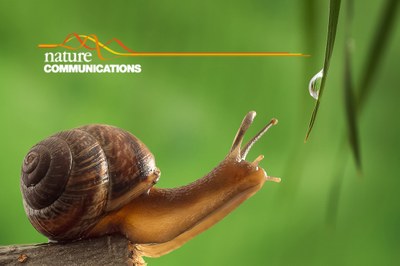From the Namur snail to the Galapagos snail, there is only one step!
 This article is available in French here...
This article is available in French here...
If you are asked to predict what will happen to a population of plants or animals in the presence of other species, your intuition will tell you that the more species there are, the more diversity there will be. For example, more plant species in a field would mean more varied flowers morphology. And yet, while this theory is correct on a limited time scale of a few generations, the trend is reversed when in the long run. Why? Because evolution comes into play.
One theory, several models
The theory of evolution suggests that all living species are in perpetual transformation and undergo over time and generations morphological and genetic modifications. This concept was introduced by Charles Darwin in 1859.
Galapagos snails
It is precisely on the Darwin Islands, who have been isolated for several centuries, that the researchers chose an example to confirm their theory. It is the Galapagos land snail. What could be better than observing a species that is not or very little influenced in its natural environment. And a wink to Namur and its symbol! In this research, the team of Professor Frederik De Laender (ILEE and naXys Institutes), was responsible for establishing the theoretical model. Thanks to this model and in situ observations, the researchers were able to demonstrate that the more populations are combined, the more individuals within the same population will be alike, in order to differentiate themselves from other species.
To better understand this, one must become familiar with the concept of functional diversity. It is the variety of characteristics found back in an ecosystem. Back to the example of flowers, their shape, colour, length of petals and other traits play a role in pollination among other things. For the snail, it will be for example the morphology of its shell.
The importance of diversity
Diversity plays an important role in the growth of a population, therefore in the functioning of the ecosystem and the production of biomass. But it seems evolution does not change anything in this process.
In a diversified environment, the race for evolution leads to such strong competition that within the same species among the others, individuals will seek to stand out. And to achieve this, they will evolve in such a way that the individuals of this species are as similar as possible. The relationship between species diversity and functional diversity may therefore be negative. This implies that trait data from species-poor communities may misjudge the functional diversity of species-rich ones, and vice versa.
Contact: Frederik de Laender - frederik.delaender@unamur.be
Article link: The evolution of trait variance creates a tension between species diversity and functional diversity
This article was produced as part of the ARC project “DIVERSE”: Does Intraspecific Variability modulate the impact of EnviRonmental Change on biodiversity and Ecosystem function.
The Concerted Research Actions, or ARCs, are 4- or 5-years projects funded by the “Communauté française de Belgique” aiming at developing university or inter-university centers of excellence carrying out fundamental and applied research in an integrated manner in areas considered as priorities.











